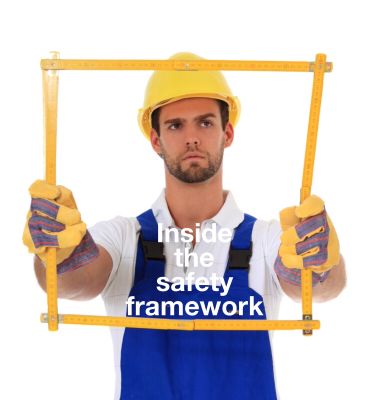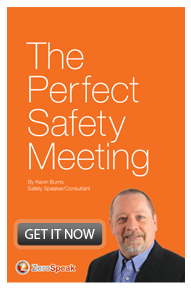Safety Process Still Requires Leadership
It’s not the framework that determines safety success. It’s what happens inside the framework.
 Each year, sports leagues adjust and tweak their respective rules in an effort to make the game more entertaining for the fans. They also adjust rules to better protect their players and make the game safer. But rule changes don’t always prevent penalties or injuries. Even with new rules, sometimes tougher rules, individual players still choose to step outside of the rules.
Each year, sports leagues adjust and tweak their respective rules in an effort to make the game more entertaining for the fans. They also adjust rules to better protect their players and make the game safer. But rule changes don’t always prevent penalties or injuries. Even with new rules, sometimes tougher rules, individual players still choose to step outside of the rules.
As much as there needs to be a framework to play the game within, it’s not the rules that improve the play. It's what the players do, the actions they take within the rules that improves the play. It's also what makes the game more exciting for the fans and safer for their fellow players.
Safety performance is only as good as the people who are engaged in safety. Safety rules and process are a framework for how we are supposed to work in safety. But it still comes down to what each individual employee chooses to do within the rules and process of safety that determines the safety program’s success.
Referees And Coaches
In sports, the referee enforces the rules. The coach, however, helps the players develop their skills and perform better within the rules. Referees don’t coach players. But, when a coach can explain a new rule to the players, the coach can adjust performance and get his players to give their best within the rules.
But rules are not just found in sports or safety. Rules are everywhere. As an example, residents of condo communities have condo rules that they abide by. Residents are required to read and know what the rules are. They abide by them because they are all owners of the corporation. To do otherwise would be disrespectful to their neighbors and fellow investors. A condo resident who continues to step outside of the agreed-to rules ends up a nuisance and detriment to his neighbors. Developing more rules doesn’t work if someone feels they don’t need to follow them. Despite the rules, people still make their own choices.
Disengagement And Rules
At work, with a disengagement rate of seventy percent, employees are barely connected to their work. They are even less connected to safely doing their work. We have to get employees' attention and engagement if we want them to engage the safety process. Making more rules and dumping them on people who aren’t engaged, aren’t listening and aren’t interested is not going to work. Rules work best when people accept them and agree to abide by them.
I had the pleasure of working with a group of senior executives and managers at a Safety Leadership meeting recently. It was refreshing to listen to their perspective of how they want to help their people to grow and perform far beyond simple rules compliance. And, they want to encourage their front-line supervisors to play a larger leadership role in safety. Their focus was not just about adding more rules. It was about engaging employees first. Then, empowering their supervisors to be able to coach and troubleshoot better.
The Rules Are Uniform
Fall protection rules are the same across all industries. Same with working at height, working underground and working with chemicals. If the same rules apply, why is the performance different from company to company? It even differs from crew to crew. Rules do not improve performance. It’s what people do with the rules that does. How a supervisor or safety person engages employees at the point of risk is what really matters. If you can engage an employee to pay more attention to their work and to be proud of their decisions, you can impact their safe choices.
 Help supervisors to become better coaches and you help them get employees to buy-in to looking after each other. Once there is commitment to protecting each other, there is adoption of best rules and practices. Yes, the safety process is very important but it still requires good coaches to explain how the rules apply. Supervisors must coach how to improve performance within the rules. Once the commitment to safety is there, the rules are easily accepted and adopted.
Help supervisors to become better coaches and you help them get employees to buy-in to looking after each other. Once there is commitment to protecting each other, there is adoption of best rules and practices. Yes, the safety process is very important but it still requires good coaches to explain how the rules apply. Supervisors must coach how to improve performance within the rules. Once the commitment to safety is there, the rules are easily accepted and adopted.
Get everyone on-board with a team focus and respect. Then build out from there. That's when the rules work best.
Kevin Burns helps organizations integrate caring for and valuing employees through their safety programs. In addition to working with and faciltating discussions between all levels of management and supervisory, Kevin can also give engaging, entertaining and inspiring presentations to front-line employees at safety meetings. Kevin Burns is a management consultant, safety leadership speaker and author of 9 books. He is based in Calgary, Canada.
©2016 ZeroSpeak Corporation and Kevin Burns.
No part of this post may be reproduced without the expressed consent of the author.


